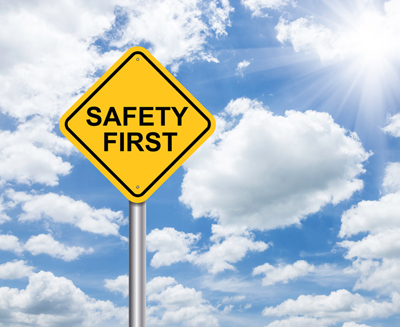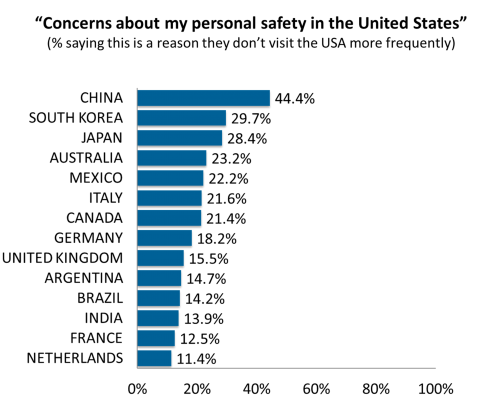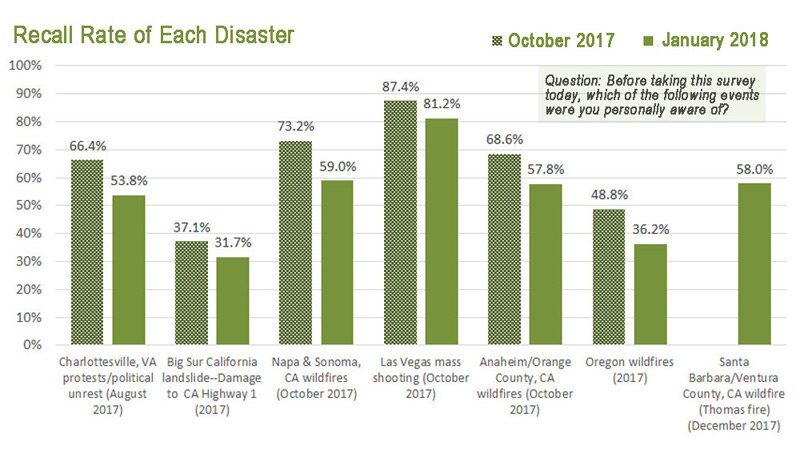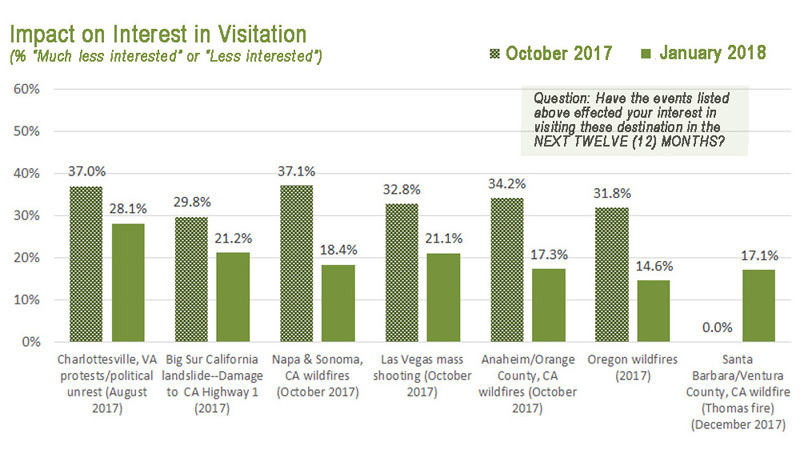It is critical that destination marketing be customer-first, led by traveling consumer desires. Using the McKinsey and Company’s framework for “The evolution of traveler needs being accelerated by major pre-COVID-19 trends,” Destination Analysts demonstrates how destination marketing can meet and succeed at each trend to make travel not just safer post pandemic, but better.
Posts

America may be the most high-profile of countries. What happens here can quickly find its way into the news around the world. Of course, no news travels more quickly than bad news, and America has recently had no shortage of such content. Mass shootings, wildfires, landslides, violent protests, hurricanes (and even now a volcanic eruption in Hawaii) have all punctuated the news cycle this year. Does the American proclivity to deliver sensational headlines keep international travelers away? It seems so, at least to a degree. One in five likely international travelers in America’s top feeder markets say personal safety concerns have kept them from visiting more.
The last few years have seen a substantial increase in overall global travel volume alongside a downward trend in unaided interest in visiting the United States. The latter trend has been measured in our annual international tracking study The State of the International Traveler. In 2017, we saw a -2.9% decrease in the overall number of international travelers writing in “The United States” in an open-ended question asking about destinations that they most wanted to visit in the coming year. Our most recent 2018 wave of the study showed an additional -4.7% drop in that figure. This consistent downward trend in unaided interest in visiting the United States strongly suggests that international travelers are choosing other destinations over the United States when they travel.
In this most recent wave of our international tracking study, we added a question to determine major deterrents to visiting the United States. The top two reasons cited for not visiting the U.S. most often were financial in nature, “too expensive” and “unfavorable exchange rate.” Not too surprising with the strength of the US dollar nowadays. But the third most cited deterrent to visiting was “Concerns about my personal safety.”
Personal safety is a serious concern of many travelers. One-in-five (20.8%) travelers around the world say safety concerns have kept them from visiting the U.S. Interestingly, when we look at the responses by country, we see that the Asian countries of China, South Korea and Japan are the most likely to report personal safety concerns while traveling in the United States. Nearly half of Chinese travelers reported this concern, a disturbing result.

Safety is also a major consideration when travelers are deciding which specific U.S. destinations to visit. Information about safety was rated overall as the fourth-most important type of information to U.S. destination decisions, following only hotels/lodging, restaurants/food and national parks. Information about safety outranks information about shopping, iconic and historical attractions, entertainment/events and transportation, to name just a few.
Travelers from China, Japan and South Korea were also the most likely to say that online video content would be influential in their travel planning and most importantly in the destination decision. This suggests that there is an opportunity, especially for destinations who are focused on moving the needle on visitation from countries like China, to create more online video content about how safe and welcoming it is here in the United States. Some destinations are already capitalizing on this opportunity. Take the “Everyone is Welcome” video campaign from Discover LA. The Los Angeles Tourism & Convention Board reported a substantial increase in visitation from China last year, setting them apart from the downward trend in visitor interest currently seen by the nation as a whole. You can read more about it here.
Marketing Insight: Online video content featuring welcoming, safe communities is a win on two counts: it addresses a top-of-mind travel concern, and delivers the message in a popular, preferred channel.
Natural and man-made disasters have been known to wreak havoc on a destination’s reputation and visitor volume. But how much do disasters truly affect the interest of travelers in visiting a destination, and how long do these effects linger? We asked American leisure travelers for an answer, and found that people may not hold onto these negative associations for as long as we had thought.
They say that life comes at you fast, and in the last several months, several of our friends in the industry have experienced this firsthand. Unexpected natural or human-caused disasters have touched their destinations, consequently impacting their brands and their ability to attract visitors. From wine-country wildfires to political riots on the East coast, a series of disasters have struck the destinations represented by several of our clients. Beyond the immediate difficulties, concerns and questions about their longer-term effects are being raised.
To help shed some light on the issue, we added a few pertinent questions to our most recent The State of the American Traveler surveys. This blog post shares some topline findings, and suggests that travelers may not hold onto these issues as long as we think.
The first piece of good news is that awareness of these disasters is far from universal. In fact, when we began looking into this last October, only about one third of American leisure travelers said they were even aware that the California coast at Big Sur had been closed to visitors due to crippling winter landslides. Fewer than half of travelers (48.8%) knew that the State of Oregon had been hamstrung by crippling wildfires. Even in these crazy times, politics may not be on the mind of as many of us as one might think. Only two-thirds of American leisure travelers were aware that the City of Charlottesville, Virginia had been the scene of dramatic political unrest late last summer. Amazingly, one in ten of us was not aware of the Las Vegas mass shooting in October.
The chart below shows recall rates for each of several disasters happening last year, and fortunately, it appears our memories for these things are not long. For each of the disasters studied, in just three short months, the percent of travelers who report having heard about the event dropped significantly.

There’s even more good news in the data. While the initial impact of a disaster on traveler sentiment may be significant, these negative feeling also appear to fade quickly. For example, in October when the fires had just ended, 37.1 percent of travelers said the Napa/Sonoma fires made them less interested in visiting the destination in the next twelve months, but by January this figure had fallen to only 18.4 percent. Similar results were seen for the other disasters.

So it appears that uncomfortable feelings about a place generated by calamities evaporate fairly quickly. Damage to the tourism sector caused by these events doesn’t need to be long-lasting. Travelers’ memories are short, and people intuitively understand that time heals wounds caused to a place. Life does indeed come at us fast, but disaster-related problem for destinations can also quickly fade in the rearview mirror.
Data source: Destination Analysts, Inc. The State of the American Traveler, October 2017 and January, 2018. Note: The Thomas Fire was added to the survey in January. No data is available for October, 2017.
